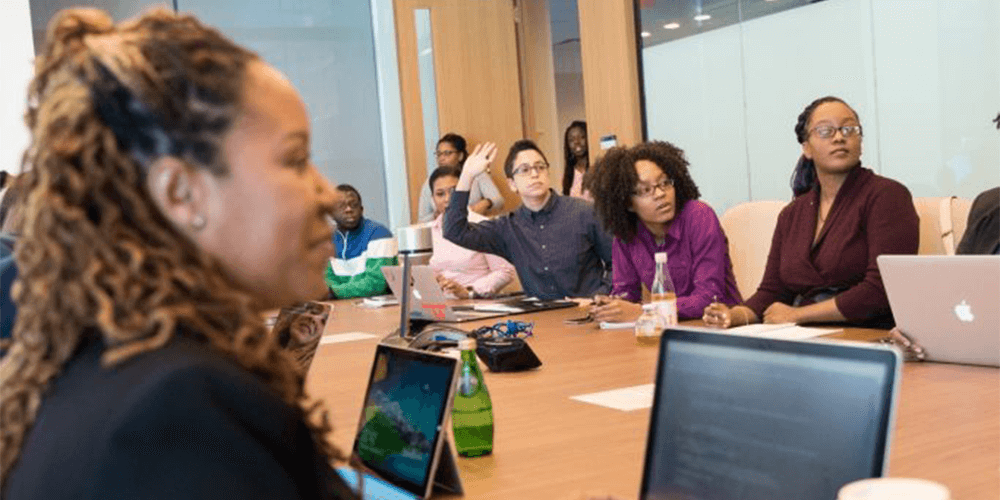- Solutions
- Products
- Community
- Resources
- Company
Create incredible candidate experiences that communicate your brand, mission, and values with recruitment marketing solutions.
Learn moreCommunicate effectively and efficiently with the candidates that can drive your business forward.
Learn moreSelect the right candidates to drive your business forward and simplify how you build winning, diverse teams.
Learn moreHelp your best internal talent connect to better opportunities and see new potential across your entire organization.
Learn moreCommunicate collectively with large groups of candidates and effectively tackle surges in hiring capacity.
Learn moreAccess tools that help your team create a more inclusive culture and propel your DEI program forward.
Learn moreRebound and respond to the new normal of retail with hiring systems that are agile enough to help you forge ahead.
Learn moreAccelerate the hiring of key talent to deliver point of care and support services that meet and exceed your promise of patient satisfaction.
Learn moreAttract and engage candidates with technical competencies, accelerate hiring for much-needed skills, and advance expertise within your valued workforce.
Learn moreSimplify how you recruit finance, insurance, and banking candidates with a unified platform built to match top talent with hard-to-fill roles.
Learn moreYour business strategy depends on your people strategy. Keep both in lockstep with the iCIMS Talent Cloud.
Learn moreBuild an engaging, high-converting talent pipeline that moves your business forward.
Learn moreDeliver the innovation your talent team needs, along with the global scale and security you demand.
Learn moreDeliver tailored technology experiences that delight users and power your talent transformation with the iCIMS Talent Cloud.
Learn moreThe #1 ATS in market share, our cloud-based recruiting software is built for both commercial and large, global employers.
Learn more Talk to salesAttract the best talent for your business with powerful, on-brand career websites that excite candidates and drive engagement.
Learn more Talk to salesBuild talent pipelines, engage candidates with multi-channel marketing campaigns, and use machine learning to automatically surface the right talent for the job.
Learn more Talk to salesEmpower candidates with automated self-service, qualification screening, and interview scheduling through an AI-enabled digital assistant.
Learn more Talk to salesSimplify employee onboarding with automated processes that maximize engagement and accelerate productivity.
Learn more Talk to salesCompliment your sourcing and engagement efforts with award-winning lead scoring and advanced campaign personalization.
Learn more Talk to salesImprove employee experience, retention, and reduce internal talent mobility friction with the iCIMS Opportunity Marketplace.
Learn more Talk to salesVerify skills with game-changing levels of automation and simplicity to improve the quality of hire at scale.
Learn more Talk to salesModernize, streamline, and accelerate your communication with candidates and employees.
Learn more Talk to salesTransform the talent experience by showcasing your authentic employer brand through employee-generated video testimonials.
Learn more Talk to salesGet robust analytics that help you make sense of your data and illuminate your talent pool.
Learn moreSimplify recruiting, dynamically engage talent, and reduce hiring bias with job matching and recruiting chatbot technology.
Learn more Talk to salesGet exclusive intel on industry and market trends along with expert one-on-one advice.
Learn more Talk to salesThe #1 ATS in market share, our cloud-based recruiting software is built for both commercial and large, global employers.
Learn more Talk to salesAttract the best talent for your business with powerful, on-brand career websites that excite candidates and drive engagement.
Learn more Talk to salesBuild talent pipelines, engage candidates with multi-channel marketing campaigns, and use machine learning to automatically surface the right talent for the job.
Learn more Talk to salesEmpower candidates with automated self-service, qualification screening, and interview scheduling through an AI-enabled digital assistant.
Learn more Talk to salesSimplify employee onboarding with automated processes that maximize engagement and accelerate productivity.
Learn more Talk to salesCompliment your sourcing and engagement efforts with award-winning lead scoring and advanced campaign personalization.
Learn more Talk to salesImprove employee experience, retention, and reduce internal talent mobility friction with the iCIMS Opportunity Marketplace.
Learn more Talk to salesVerify skills with game-changing levels of automation and simplicity to improve the quality of hire at scale.
Learn more Talk to salesModernize, streamline, and accelerate your communication with candidates and employees.
Learn more Talk to salesTransform the talent experience by showcasing your authentic employer brand through employee-generated video testimonials.
Learn more Talk to salesGet robust analytics that help you make sense of your data and illuminate your talent pool.
Learn moreSimplify recruiting, dynamically engage talent, and reduce hiring bias with job matching and recruiting chatbot technology.
Learn more Talk to salesGet exclusive intel on industry and market trends along with expert one-on-one advice.
Learn more Talk to salesHow a beloved restaurant hires 40,000+ annually with a great candidate experience.
Learn moreThousands strong, our global community of talent professionals includes creatives, innovators, visionaries, and experts.
Learn moreTogether we’re creating the world’s largest ecosystem of integrated recruiting technologies.
Learn moreExplore our network of more than 300 certified, trusted third-party service and advisory partners.
Learn moreUncover unique market insights, explore best practices and gain access to talent experts across out library of content.
Get resourcesExpert guidance about recruitment solutions, changes in the industry, and the future of talent.
Learn moreStay up to date with the latest terminology and verbiage in the HR software ecosystem.
Learn moreEmployers everywhere improve hiring efficiently and save money using iCIMS. Estimate the potential business value you can achieve.
Learn moreDive into the Class of 2023 Report highlighting this cohort’s expectations and where employers are willing — and able — to meet them.
Watch nowPartner with iCIMS to build the right strategies, processes, and experience to build a winning workforce.
Learn moreExpert guidance about recruitment solutions, changes in the industry, and the future of talent.
Learn moreThe iCIMS Talent Cloud delivers a secure, agile, and compliant platform designed to empower talent teams, job seekers, and partners with advanced data protection and privacy.
Learn moreView press releases, media coverage, and the latest hiring data. See what analysts are saying about iCIMS.
Learn moreiCIMS is the Talent Cloud company that empowers organizations to attract, engage, hire, and advance the talent that builds a winning workforce.
Learn moreGet to know the award-winning leadership team shaping the future of the recruiting software industry.
Learn moreWe believe the future of work isn't something that "happens" to you. It's something you create. We actively create the future of work with our customers every day.
Learn moreiCIMS is committed to being a responsible and ethical corporate citizen, which is why Environmental, Social and Governance (ESG) initiatives are strategic imperatives.
Learn moreStreamline your tech stack and take advantage of a better user experience and stronger data governance with ADP and the iCIMS Talent Cloud.
Learn moreThe combined power of iCIMS and Infor helps organizations strategically align their business and talent objectives.
Learn moreOur award-winning partnership with Microsoft is grounded in a shared desire to transform the workplace and the hiring team experience.
Learn moreOur partnership with Ultimate Kronos Group (UKG) supports the entire talent lifecycle by bringing frictionless recruiting solutions to UKG Pro Onboarding.
Learn moreLet’s get in touch. Reach out to learn more about iCIMS products and services.
Learn more

Under pressure—good song, bad feeling. No one wants to feel the stress and anxiety of being asked to kickstart a complex, sensitive program—especially not one that is getting global media coverage.
But that might be you. You and your colleagues may be the ones currently tasked with uncovering layers of bias at your company and determining how to eradicate them from your practices.
The pressure is on. With everything going on in the world today, particularly in large cities, companies are on the line to say something; do something; change. That’s why corporate diversity and inclusion initiatives are popping up at your organization (hopefully), in your social feeds, and topping your inboxes.
Inaction is part of the problem, so I’m excited to see how various corporations are responding to important social issues. As a member of the talent community, I know you want to ensure your company is taking the necessary steps to facilitate positive change, too.
As a TA/HR leader you want to start with assessing your goals: How diverse is your workforce and where are the gaps? At what job levels do you need to focus? What about inclusion efforts? In other words, what do you mean by diversity and inclusion initiatives and what are their measurable outcomes? (Learn more about diversity and inclusion in hiring here).
To help break it down, our partner Melissa Dobbins, Founder and CEO of Career.Place, an anonymous candidate screening solution, noted the levers needed to reach your goals. Melissa bucketed them into three main categories so you can get started.
1. People: Everything starts and ends with people. With the right talent, you can achieve anything. So, look at your current demographics. It’s important to see where you are today to determine where you can be tomorrow.
2. Process: Once you know where you are, check out the recruitment marketing efforts you use in market now. What are you saying in your messaging? Who typically responds? Who typically does not? The data will help reassess and reposition your go-to-market strategy to open the door to a wider pool of talent.
3. Tech: Next, you need to use the right recruiting software to meet your goals. When data funnels from your candidate applicant tracking system to your screening, interview, and recruitment marketing platform, you have one unified system of record. This will help you to track your progress and iterate when needed.
To succeed, you’ll want to ensure the above three categories are leveled to your corporate objectives and fundamental goals. Without an infrastructure of support at the highest level, you’re more likely to have a temporary fix rather than foundational change. To sustain support from C-Suite members, help tie goals to revenue, profit, cost, brand value, risk, and compliance. In other words, you need to find the value in diversity initiatives rather than hitting some arbitrary number.


“With the wrong goals, you risk losing support and momentum and ultimately the initiative can fizzle and fail.”– Melissa Dobbins, Founder and CEO, Career.Place
Straight numbers should not be the focus. Setting a goal of hiring 30% more women or making a demographic a qualification for employment will not improve your workforce. Sure, on paper it will sound better, but will it really help improve your diversity and inclusion initiatives? When you tokenize people as a “diversity hire,” they will feel it; the organization will feel it; and the needle moves backwards.
Instead, look for ways to draw in more talent with a set precedent on how you attract all groups to your organization. An actionable first step is to review your core recruiting software tools and make sure the messaging does not feed biases. The following are great places to start:
– Talent Pools
– Career Pages
– Job Descriptions
– Job Requirements
– Candidate Screening


“Drive tomorrow to be better than today” – Melissa Dobbins, Founder and CEO, Career.Place
When you ensure your talent attraction tools focus on hiring the best talent—regardless of gender, race, or orientation—then you organically create a diverse workforce. To learn more about how to approach diversity and inclusion at your organization, check out Decode Diversity: How to Recruit High-Performing Teams.
and receive free tips on how to attract, engage, hire, & advance the best talent.





